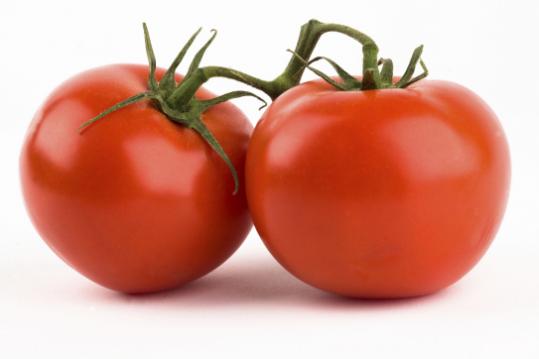 What Makes A Tomato Really Tasty?
What Makes A Tomato Really Tasty?

Most tomatoes you buy from the supermarket are red, ripe and perfect looking. Scientists have been thinking about the difference between a good and bad tomato, breaking it down to sugar and acid concentration. Turns out, there's more that makes a tomato, nice.
Research from the 1960s suggested balance of sugar and acid was all that mattered in lovely tomatoes. A new study, carried out at the University of Florida, suggests that, the presence of subtle aromatic compounds is what makes them tasty. And that's apparently what's really missing from most supermarket tomatoes.
Scientists conducted a taste test involving 170 volunteers and they grew 152 varieties of heirloom tomatoes—older, open-pollinated varieties that come in all kinds of shapes, sizes and colors—and also purchased standard tomatoes from a local supermarket. Scientific American summarizes the results, which are published in Current Biology:
"In Klee's analysis, the most abundant volatile compounds in a tomato-the C6 volatiles-barely influenced what people thought of the fruit's flavor. When volunteers compared the taste of ordinary tomatoes and mutant tomatoes that were genetically modified to lack C6 volatiles, they could tell the two apart, but they did not have much of a preference for one over the other. In contrast, a less prevalent volatile compound named geranial made a huge difference to tomato flavor. Klee noticed that many of the tomatoes the taste testers preferred contained moderate to high levels of geranial. When volunteers tried mutant tomatoes with normal levels of sugar, but low levels of geranial, they did not rate the fruits highly. Geranial, Klee concluded, somehow improves a tomato's overall flavor, perhaps by enhancing the fruit's innate sweetness. Supporting this reasoning, a majority of taste testers in an earlier study enjoyed the flavor of tomatoes engineered to contain lemon basil geraniol, which is related to geranial. Compared with heirloom varieties, standard supermarket tomatoes generally have less geranial and other volatime compounds. "They're kind of like lite beer," Klee says. "Even if all the chemicals are there, they are at lower levels.""
[Current Biology via Scientific American]









